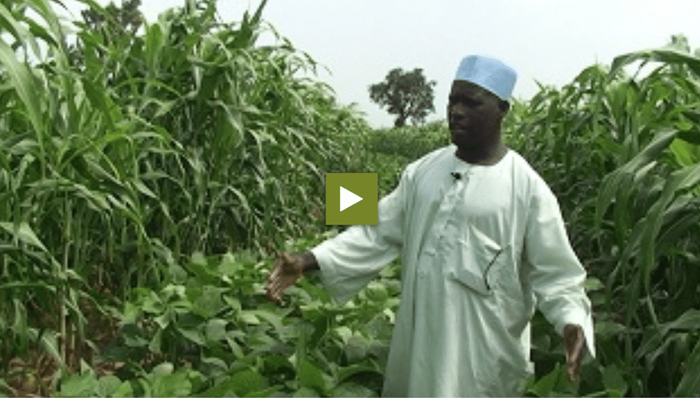Legumes help farmers in many ways. They are good to keep a successful harvest and fighting against Striga. To know how to use legumes the best way, you will learn some guidelines.
Some farmers sow a few cowpea plants between millet, sorghum and maize after the cereal crop. Then the leaves fall down on the soil early in the season and weed can grow. The parasitic red and purple flowered plant Striga is one of these weed varieties. Striga attaches to the roots from cereal crops and sucks their water and nutrients away.
Legume Crops benefits
Cowpea, groundnut and soya beans are examples for legumes. Legumes produce pods and provide food, fodder and income. They add nitrogen to the soil and improve its fertility. A soil that is good covered with legumes stays moist and prevents Striga growth.
Trap crops like tobacco, cotton and sesame are also legumes. They are able to kill Striga. Trap crops have roots which attract Striga and let it germinate. But Striga can‘t attack the trap crops and therefore dies.
Making rows
Legumes grow poorly, if they are planted in big distances. Then some cereals grow in the shades of others. But if you grow separated rows of legumes and crops, there is less shade, so the plants can grow better.
If you plant three rows of soya beans, you can plant two rows of sorghum in the following year. The beans can kill Striga which gives a possibility to grow sorghum.
To have a good cereal harvest you should grow the cereals closer together and add compost and mineral fertilizer. It is easier to apply mineral fertilizer on crops which are in rows.
With legumes that are standing straight it is easier to weed with a hoe or animals. A creeping legume begins covering the soil and distracting the weed. Legumes that grow on soil that has been composted can grow and cover the soil even better.



















